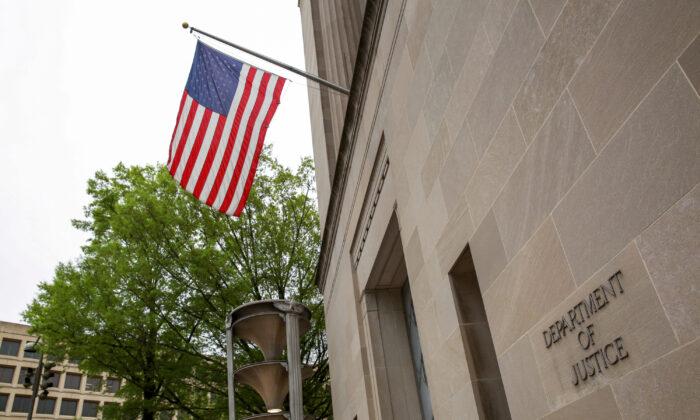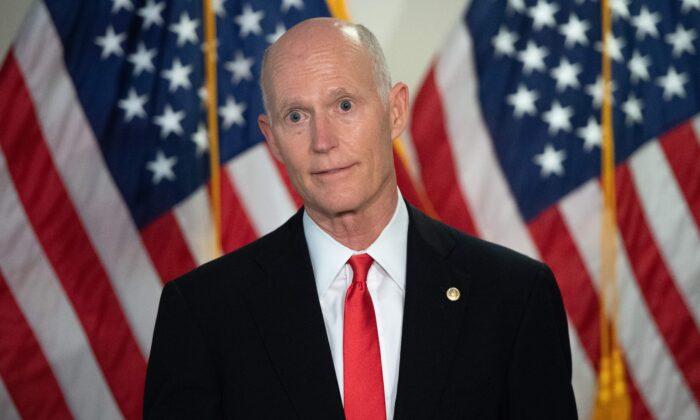For the first time in history, accidental opioid overdose has surpassed motor vehicle accidents as the leading cause of unintentional deaths, according to a new report by the National Safety Council (NSC).
Americans have a 1 in 96 chance of dying from an opioid overdose, while the probability of dying in a motor vehicle accident is 1 in 103. The council’s
analysis is based on 2017 mortality data by the National Center for Health Statistics, which is part of the Centers for Disease Control and Prevention (CDC).
“The nation’s opioid crisis is fueling the Council’s grim probabilities, and that crisis is worsening with an influx of illicit fentanyl,” the NSC said in a
statement on Jan. 14.
According to the
National Institute on Drug Abuse (NIDA), more than 130 people in the United States die of an opioid overdose each day, while the cost of prescription opioid misuse in the country is $78.5 billion a year. This includes the costs of healthcare, lost productivity, addiction treatment, and criminal justice involvement.
The recent report comes at a time where public health officials and law enforcement are highlighting the risks of the opioid epidemic that is plaguing Americans. In the most recent example, a mass drug overdose at a home in California killed one and hospitalized a dozen more.
Authorities said the overdoses were likely to have been caused by fentanyl. Chico Police Chief Michael O'Brien added that they had been waiting for such an event to happen amid reports that the dangerous narcotic was heading west.
Fentanyl, a synthetic opioid pain reliever 50 to 100 times more potent than morphine, surpassed heroin to become the most common drug linked to an overdose death in 2016, according to the CDC (
pdf). Two milligrams of fentanyl is a lethal dose for a non-opioid user.
Its discovery in the late 1970s as a powerful alleviator of chronic pain led to a dramatic increase in sales and prescriptions. The drug’s sales increased about 10-fold in the first year (1981) after the drug’s initial patent wore off, and in 2004, sales exceeded $2.4 billion in the United States, according to a study published in the
Journal of Pain.
Back in October 2017, President Donald Trump
declared the opioid crisis a national public health emergency. The Senate subsequently passed a bill that received bipartisan support to combat the crisis.
The law includes a number of initiatives to advance recovery and treatment, and to prevent drugs from getting into people’s hands in the first place. It also includes research into non-opioid alternatives for the treatment of pain.
“While there is still much work to be done, this historic effort will undoubtedly save lives and put families and communities across our country on the road to recovery,” Rep. Greg Walden (R-Ore.), a sponsor of the act, said at the time.
An Uptick in Preventable Injuries
Although the leading cause of death in the country is heart disease at a 1 in 6 chance and cancer at 1 in 7, only preventable injuries—which are more commonly known as “accidents”—saw a rise in 2017, according to NSC.Preventable injuries are the third leading cause of death, claiming an unprecedented 169,936 lives in 2017. The chance for a person of dying from an accident went up to one in 25, as opposed to a chance of one in 30 back in 2004.
“We’ve made significant strides in overall longevity in the United States, but we are dying from things typically called accidents at rates we haven’t seen in half a century,” said Ken Kolosh, manager of statistics at the NSC.
“We cannot be complacent about 466 lives lost every day. This new analysis reinforces that we must consistently prioritize safety at work, at home, and on the road to prevent these dire outcomes,” he said.
If you or someone you know needs help for opioid addiction, call the national helpline: 1-800-662-HELP (4357) or find resources online at SAMHSA.gov Reporter Shiwen Rong contributed to this report.




